Disclosure: This article contains affiliate links. We may earn a commission from purchases at no extra cost to you, which helps our travel content.
There exists a place where time seems suspended between centuries, where the gentle lapping of the Indian Ocean against ancient stone walls creates a rhythm that has remained unchanged for a millennium. Lamu Island, nestled along Kenya's northern coast, represents one of the most perfectly preserved Swahili settlements in East Africa. As a landscape architect who has spent decades studying the integration of built environments with natural healing spaces, I found myself irresistibly drawn to this UNESCO World Heritage site not merely as a traveler, but as a student of how traditional design principles can create profound wellness experiences. What began as a research expedition to document Lamu's courtyard gardens evolved into a transformative week at some of the most exquisite private villas I've encountered in my global travels—spaces where traditional craftsmanship and contemporary luxury intertwine to create environments of extraordinary restorative power.
The Architectural Soul of Lamu: Understanding Swahili Design Principles
To truly appreciate the luxury villas of Lamu requires understanding the sophisticated design language that has evolved here over centuries. Traditional Swahili architecture represents one of the world's most elegant responses to climate, culture, and available materials—a vernacular wisdom I've often incorporated into my therapeutic landscape designs.
The signature elements are immediately recognizable: coral rag limestone walls that breathe in the coastal humidity, intricately carved wooden doors that tell family histories, and perhaps most importantly, the central courtyard that serves as the heart of each dwelling. These inner sanctums function as natural air-conditioning systems, creating microclimates where cool air circulates through carefully positioned windows and corridors.
What makes Lamu's finest villas exceptional is how they honor these traditional principles while subtly integrating modern comforts. At Forodhani House, where I spent my first three nights, 18th-century wooden ceiling beams frame views of the courtyard's frangipani trees, while discreet ceiling fans augment the natural ventilation. The villa's rooftop terrace—a traditional feature for catching sea breezes—has been transformed into a dining space where the villa chef serves freshly caught fish under stars undiminished by light pollution.
The most successful villas respect the island's car-free nature, working with rather than against the limitations of a place where donkeys remain the primary mode of transportation. Their beauty lies in this thoughtful constraint—luxury defined not by ostentation but by harmony with place and tradition.

💡 Pro Tips
- Request a private architectural tour with a local historian to understand the significance of design elements in your villa
- Spend time in your villa's courtyard at different times of day to experience how the light and airflow change
- Ask villa staff about the stories behind specific architectural features, particularly carved doors and niches
Healing Waters: The Therapeutic Landscapes of Shela Beach
My professional focus on therapeutic landscapes drew me specifically to the Shela Beach area of Lamu, where the island's most exclusive villas are situated along immaculate white sand beaches. Here, the relationship between built environment and natural elements achieves a rare harmony that I've found has measurable effects on physical and mental wellbeing.
The Beach House, perhaps the most prestigious accommodation on the island, exemplifies this integration. Its series of interconnected pavilions blur the distinction between indoor and outdoor space—a design principle I've long advocated in my healing garden designs. Floor-to-ceiling wooden doors fold away completely, allowing the sea breeze to flow unimpeded through living spaces furnished with locally made pieces that honor Swahili craftsmanship.
The villa's infinity pool appears to merge with the Indian Ocean beyond, creating what environmental psychologists call a 'soft fascination' view—the type of vista that allows the mind to enter a meditative state without effort. I spent hours each morning swimming laps here, watching dhow sailboats drift across the horizon while tracking the subtle shifts in water color as the sun climbed higher.
For those seeking deeper immersion in therapeutic waters, I recommend arranging a private dhow excursion to Manda Toto, an uninhabited island with exceptional snorkeling. The villa manager can arrange for the chef to prepare a gourmet picnic lunch served on a pristine sandbank. I brought my underwater camera to capture the vibrant coral formations and marine life—the visibility here rivals what I've experienced in the Maldives, but with a fraction of the tourists.

💡 Pro Tips
- Request your villa staff to prepare a traditional Swahili bath ritual using local herbs and flowers
- Schedule yoga sessions on your private beach at sunrise when the light quality is extraordinary
- Book a villa with direct beach access for therapeutic early morning walks along the shoreline
Cultivating Wellness: Private Chefs and Local Ingredients
The culinary dimension of Lamu's luxury villa experience deserves special attention, particularly for those interested in the intersection of nutrition and wellbeing. Unlike conventional hotels, these private residences come with dedicated chefs who craft personalized menus drawing from the island's rich maritime bounty and spice traditions.
At Jahazi House, where I spent the latter half of my stay, Chef Omar combines traditional Swahili cooking techniques with contemporary presentations. Each morning began with freshly pressed juice blends on my private terrace—mango and baobab one day, watermelon and ginger the next—accompanied by just-baked coconut bread still warm from the wood-fired oven.
What impressed me most was Omar's knowledge of local medicinal ingredients, something I've documented extensively in my work on traditional healing environments. When I mentioned a slight digestive discomfort from my travels, he prepared a soothing tea using lemongrass and wild mint harvested from the villa's kitchen garden, followed by a light fish curry seasoned with turmeric and other anti-inflammatory spices.
The opportunity to discuss menu planning directly with your chef creates a deeply personalized experience. I particularly recommend requesting a cooking demonstration focused on Swahili spice blending. Omar showed me how to prepare a proper pilau rice using a traditional wooden mortar and pestle to crush cardamom, cloves, and cinnamon—a technique I've since incorporated into my own cooking back in London.
Many villas can also arrange fishing excursions where you catch your own dinner, which is then prepared by the chef. This connection to food source and preparation process embodies the holistic wellness approach that makes Lamu's villa experience so restorative.

💡 Pro Tips
- Discuss any dietary preferences or restrictions with your villa chef upon arrival
- Request a tour of the villa's herb garden to understand local medicinal plants
- Ask your chef to demonstrate traditional Swahili cooking techniques you can take home
Cultural Immersion Beyond Villa Walls
While the private villa experience in Lamu offers unparalleled luxury, the island's rich cultural heritage provides a depth of experience that transcends typical resort destinations. As someone who has spent decades documenting traditional environments, I found Lamu's living cultural landscape to be its most valuable asset.
Lamu Town itself, with its labyrinthine streets too narrow for vehicles, offers an immersive journey into a way of life that has remained remarkably consistent since the 14th century. I recommend requesting your villa manager arrange a private guided tour with one of the town's cultural historians. My guide, Abdullah, a former curator at the Lamu Museum, provided insights into the symbolic meanings behind architectural details I would have otherwise missed.
The Takwa Ruins on neighboring Manda Island present a fascinating counterpoint to Lamu's living heritage. This abandoned 16th-century Swahili settlement offers valuable perspective on how environmental changes can impact even the most sophisticated civilizations—a subject that resonates deeply with my work on sustainable landscape design.
For those interested in traditional crafts, arrange a visit to a local woodcarver's workshop. These artisans create the intricate doors and furniture that define Swahili aesthetics, using techniques passed down through generations. I purchased a small carved box as a memento, but more ambitious travelers might commission custom furniture pieces that can be shipped internationally.
To document these cultural experiences, I relied on my compact camera, which proved ideal for capturing authentic moments without being obtrusive. The classic rangefinder design actually helped initiate conversations with locals curious about my vintage-looking equipment.

💡 Pro Tips
- Dress modestly when visiting Lamu Town out of respect for local Islamic traditions
- Hire a local guide through your villa manager rather than accepting offers from touts
- Visit the Lamu Museum early in your stay to gain historical context for what you'll experience
Crafting Your Perfect Villa Experience: Practical Considerations
Selecting the ideal private villa in Lamu requires careful consideration of several factors beyond mere aesthetics. Having experienced multiple properties during my stay, I can offer some guidance on navigating this decision.
First, consider location carefully. Villas in Shela Village offer proximity to restaurants and the main beach, while those further north provide greater seclusion but require boat transportation for most activities. During my visit, I found the sweet spot at Kizingoni Beach, where villas like Jahazi House offer privacy without isolation.
Staffing varies significantly between properties. The most exclusive villas provide a full complement including private chef, butler, housekeeping team, and dedicated boat captain. This level of service transforms the experience from merely luxurious accommodation to a comprehensive wellness retreat. I particularly appreciated having a house manager who could arrange impromptu experiences based on my interests, such as a sunset meditation session with a local spiritual leader.
For families or groups traveling together, villa configuration becomes crucial. Some properties feature separate guest pavilions providing privacy, while others center around communal spaces that foster connection. Jahazi House excels with its thoughtful layout—four master suites of equal size prevent the typical holiday hierarchy of 'best room' disputes.
Perhaps most importantly for the discerning traveler is understanding seasonal variations. I deliberately chose to visit in January, when the Kaskazi winds create perfect sailing conditions. Those sensitive to heat might avoid March through April, when humidity peaks before the long rains.
For comfortable travel around the island, I recommend packing a lightweight beach bag that can accommodate essentials for day trips, along with a sun hat with proper UPF protection—the equatorial sun here is deceptively intense even on cloudy days.

💡 Pro Tips
- Book villas through specialized agencies that can provide detailed information about staffing and amenities
- Request villa floor plans before booking to ensure the layout suits your group's needs
- Consider splitting your stay between Shela Village and a more remote location for varied experiences
Final Thoughts
As my dhow sailed away from Lamu's shores on my final morning, I found myself reflecting on how this island retreat had affected me beyond the expected pleasures of a luxury holiday. There is something profoundly restorative about experiencing spaces where traditional wisdom about human-environment relationships remains intact—something I've sought to capture in my own landscape design practice. The private villas of Lamu represent more than mere accommodation; they are living embodiments of a design philosophy that prioritizes harmony with nature, cultural authenticity, and human wellbeing. For couples seeking not just escape but genuine renewal, I can think of few destinations that offer such a perfect integration of luxury comfort with meaningful experience. The investment required for this level of exclusivity is substantial, certainly, but the return—measured in moments of perfect tranquility and connection—proves immeasurable.
✨ Key Takeaways
- Lamu's private villas offer a rare combination of historical authenticity and modern luxury
- The island's car-free environment and traditional architecture create naturally therapeutic spaces
- Personal staff including private chefs transform the experience from accommodation to holistic retreat
- Cultural immersion opportunities provide depth beyond typical luxury beach destinations
📋 Practical Information
Best Time to Visit
December to March (dry season with Kaskazi winds)
Budget Estimate
$1,000-3,000 per night for exclusive villas including staff
Recommended Duration
7-10 days
Difficulty Level
Easy
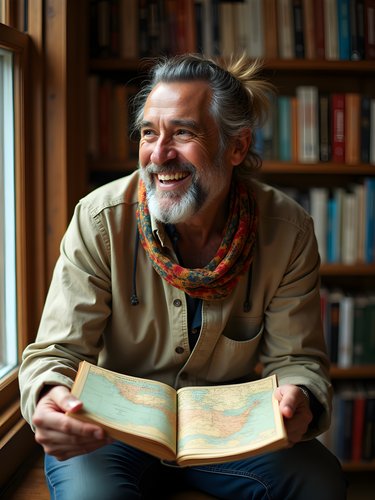
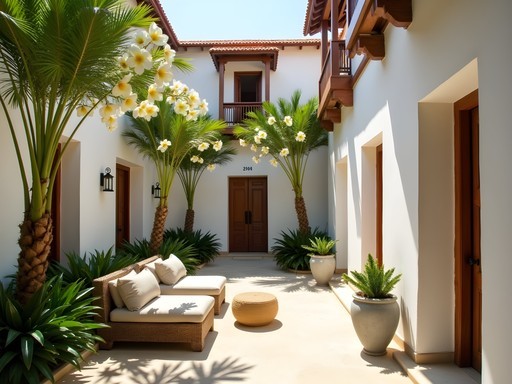






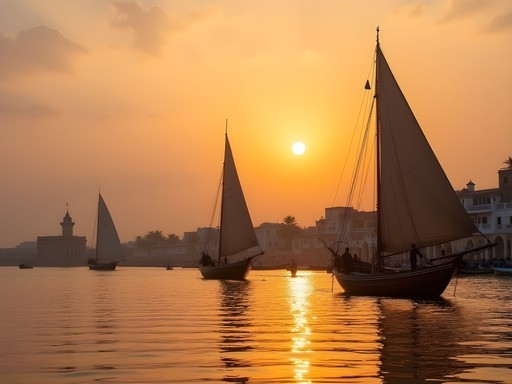
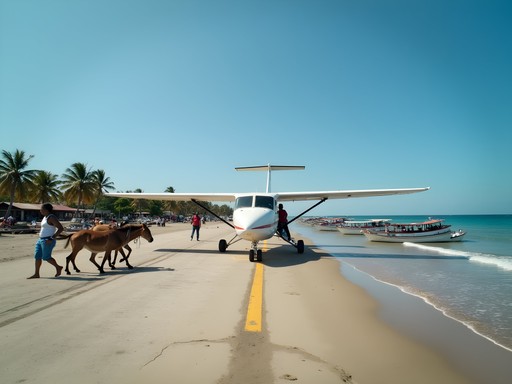


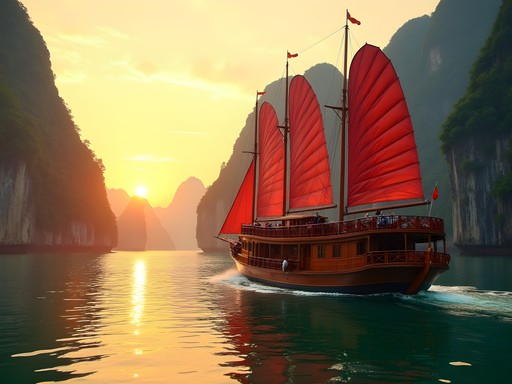


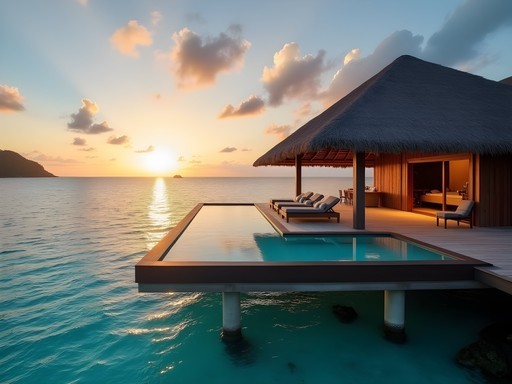
Comments
winterstar
Taylor, your section on cultural immersion really resonated with me. When I visited Kenya (though not Lamu specifically), connecting with locals transformed my trip from a typical vacation into something meaningful. The Swahili design elements you described sound fascinating - were there any particular architectural features that you found most impressive? I'm an interior design enthusiast and always looking for global inspiration!
Taylor Moreau
The carved wooden doors were absolutely stunning - each one unique with intricate patterns that tell stories of the home's history and the family's status. I also loved the inner courtyards that create natural cooling and the rooftop terraces with views across the town. The way they build for natural ventilation is brilliant design that's both beautiful and practical!
vacationvibes
This looks incredible but I'm wondering about the cost... Are we talking thousands per night for these private villas? Any more affordable options that still give you the Lamu experience?
Amit Sullivan
Not Taylor, but I can share that Lamu has options across budgets. The ultra-luxury villas are indeed $1000+/night, but there are lovely guesthouses in Shela starting around $150-200/night that still have beautiful Swahili architecture and great service. Some even have shared pools. The beach and cultural experiences are available to all!
vacationvibes
That's really helpful, thanks Amit! $200/night is much more in my range and still sounds amazing.
Marco Flores
What a beautiful portrait of Lamu! While I typically chase more adrenaline-fueled experiences, I found myself unexpectedly enchanted by Lamu's slow pace during a recovery period after a climbing expedition in Kenya. The contrast was exactly what I needed. For anyone visiting, I'd recommend venturing beyond the villas for a sailing excursion to Manda Island. The pristine beaches there feel completely untouched. I captured some of my favorite drone footage ever over the archipelago's blue channels. One practical tip: I used my dry bag backpack constantly, as boat transfers between islands are part of daily life. Taylor, your section on cultural immersion was spot on - the local artisans have incredible stories if you take time to listen.
citymate
I stayed in Lamu town rather than Shela Beach last year and it was a totally different vibe - more local, less luxury. Both have their charms but if you're after relaxation, Taylor's right about Shela being the spot. The walk between the two along the beach is gorgeous at low tide. Just remember there are no cars on the island - only donkeys and your own two feet!
luckydiver
Beautiful post! I'm curious about the best time of year to visit Lamu? Is there a rainy season to avoid? And how did you handle the logistics from Nairobi?
Taylor Moreau
Thanks luckydiver! The best time is December-March (dry and not too hot). Avoid April-June (heavy rains). I flew from Nairobi to Lamu Airport (daily flights available) and arranged a boat transfer to my villa through the property. The villa manager can help coordinate everything!
luckydiver
Perfect, thanks for the tips! Looking at January then. Can't wait!
Amit Sullivan
Taylor, your piece transported me back to my own stay in Lamu last year. There's something almost mystical about how the island exists between centuries, isn't there? I spent a week in a villa near Shela Beach, and the rhythmic tide became my natural alarm clock. The architectural details you highlighted - particularly those carved Swahili doors - deserve every bit of praise. One experience I'd add for readers: arrange for a sunset dhow cruise with local musicians. Hearing traditional Swahili songs while floating past mangroves as the sun melts into the horizon was perhaps the most profound memory I carried home. The gentle persistence of Lamu's beauty stays with you long after departure.
Taylor Moreau
Amit, that sunset dhow cruise sounds magical! I completely agree about the island's mystical quality - it's like stepping into a different relationship with time itself. Those carved doors captivated me too - each telling its own centuries-old story.
wildwalker
Those private chefs sound amazing. Food goals!
winterstar
Right? I'm drooling just thinking about fresh seafood prepared by a local chef!
moongal
OMG Taylor this is EXACTLY what I needed to read today! Those villa photos are absolutely stunning! The Swahili architecture details are just breathtaking. Adding Lamu to my dream destinations RIGHT NOW!
blueexplorer
This looks incredible! How long would you recommend staying to really experience Lamu properly? Is a weekend enough or should I plan for longer?
Kimberly Murphy
I'd recommend at least 4-5 days! Lamu operates on 'pole pole' time (slowly slowly in Swahili). You need a few days to adjust to the pace and really sink into the experience. Plus there's Lamu Town, Shela Beach, Manda Island, and boat trips to consider. It's worth the extra days!
blueexplorer
Thanks Kimberly! Will definitely plan for a longer stay then. Can't wait!
Gregory Boyd
Having backpacked through much of East Africa, I found Lamu to be one of the most culturally rich destinations in Kenya. While the luxury villas Taylor describes are spectacular, what really makes Lamu special is its preserved Swahili culture. The island's car-free nature forces you to slow down and engage with the environment. For architecture enthusiasts, the Lamu Museum offers fascinating insights into the design elements Taylor mentioned. The monsoon seasons significantly affect travel here - April-May can be very wet, while January-February offers perfect weather. If you're interested in deeper cultural experiences, try to time your visit with the Lamu Cultural Festival (November) or Maulid Festival (celebrating the Prophet's birthday). The blend of African, Arabic, and Indian influences creates a unique cultural tapestry that's increasingly rare to find intact.
Venture X
Premium card with 2X miles, $300 travel credit, Priority Pass